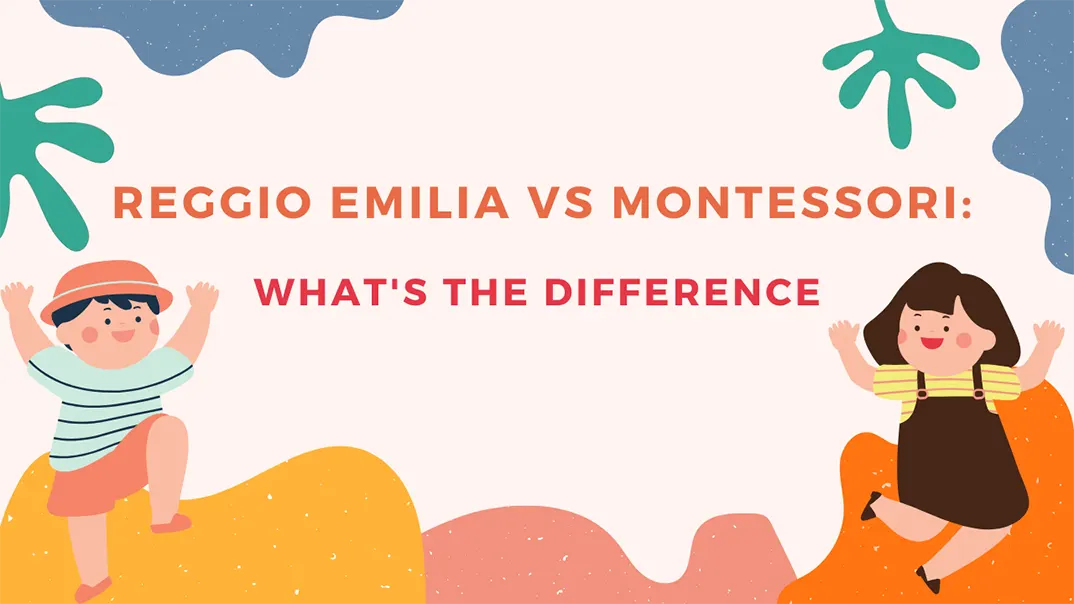Dos nombres aparecen con frecuencia en la educación infantil temprana: Reggio Emilia vs. Montessori. Pero ¿cuál es la verdadera diferencia entre Reggio Emilia y Montessori? ¿Cómo se comparan los métodos de enseñanza, los entornos de clase y el diseño del mobiliario? ¿Reggio Emilia vs. Montessori, cuál es mejor para tu hijo?
Tanto Reggio Emilia como Montessori son enfoques educativos centrados en el niño, pero se basan en filosofías y metodologías diferentes. Si bien ambos fomentan el aprendizaje práctico y el juego autónomo, sus principios y prácticas fundamentales difieren significativamente.
Tanto Reggio Emilia como Montessori gozan de gran prestigio y adopción en todo el mundo. Pero con sus distintos enfoques, ¿cómo decidir cuál es el más adecuado para su hijo? En este artículo, exploraremos las principales diferencias y similitudes entre ambos, para ayudarle a tomar una decisión informada sobre el proceso de aprendizaje de su hijo.
What Is Reggio Emilia Approach Vs Montessori?
Al comparar Reggio Emilia y Montessori, la distinción más importante reside en la filosofía y los objetivos generales de cada sistema. Ambos se centran en fomentar el desarrollo natural del niño, pero utilizan diferentes vías para lograrlo.
| Aspecto | Reggio Emilia | Montessori |
|---|---|---|
| Filosofía | Se centra en la creatividad, la expresión y la colaboración. | Se centra en la independencia y el aprendizaje autodirigido. |
| El papel del docente | Guía y co-aprendiz, observando y documentando. | Guía y observador, apoyando el trabajo independiente. |
| Configuración del aula | Flexible, con espacios abiertos para el trabajo en grupo y la creatividad. | Estructurado con áreas de aprendizaje y materiales claros. |
| Estilo de aprendizaje | Basado en proyectos, con aprendizaje impulsado por los intereses de los niños. | A su propio ritmo, con materiales específicos para cada concepto. |
| Materiales | Materiales naturales y abiertos para la exploración. | Materiales diseñados Montessori para habilidades específicas. |
| Interacción social | Fuerte énfasis en el trabajo en grupo y la colaboración. | Centrarse en el trabajo individual con cierta interacción grupal. |
| Evaluación | Documentación continua del aprendizaje infantil. | Basado en la observación, ajustándose al ritmo de cada niño. |
| Mejor para | Niños creativos, sociales y a quienes les gusta trabajar en grupo. | Niños independientes que prosperan en entornos estructurados. |
¿Qué es Reggio Emilia?
El Enfoque de Reggio Emilia Es una filosofía educativa originada en Italia después de la Segunda Guerra Mundial. Fue desarrollada por el educador Loris Malaguzzi, quien creía que los niños aprenden mejor en entornos con abundantes oportunidades de exploración y expresión. Este método enfatiza la importancia de los niños como participantes activos en su proceso de aprendizaje. En las aulas de Reggio Emilia, se anima a los niños a expresar sus ideas mediante diversas formas de comunicación, como el lenguaje verbal, las obras artísticas e incluso el movimiento.
El enfoque principal de la educación en Reggio Emilia se centra en los "cien lenguajes de los niños": la idea de que los niños se expresan de múltiples maneras. Estas expresiones se valoran y fomentan mediante el aprendizaje colaborativo basado en proyectos, donde los docentes guían a los niños en lugar de dirigirlos. El entorno es crucial, con aulas diseñadas para inspirar la curiosidad y la creatividad.

Pros y contras de Reggio Emilia
Ventajas de Reggio Emilia:
- Se centra en el aprendizaje dirigido por los niños, lo que les permite explorar sus intereses.
- Enfatiza la creatividad y la expresión a través de diversos medios como el arte, la música y el movimiento.
- Fomenta una fuerte conexión entre los niños, los maestros y la comunidad.
- Promueve la colaboración y el trabajo en grupo, lo que mejora las habilidades sociales.
Desventajas de Reggio Emilia:
- Puede que no sea adecuado para niños que requieren más estructura y orientación.
- El método requiere profesores altamente capacitados y dedicados, lo que puede dificultar su implementación.
- El currículo no está estandarizado, lo que dificulta evaluar o comparar el éxito entre diferentes escuelas.
¿Qué es la educación Montessori?
El método Montessori, fundado por la Dra. Maria Montessori a principios del siglo XX, es una de las filosofías educativas más reconocidas a nivel mundial. Se basa en la idea de que los niños aprenden mejor cuando pueden explorar su entorno a su propio ritmo, con la guía de educadores capacitados. Las aulas Montessori están diseñadas para fomentar la independencia, la autodisciplina y el amor por el aprendizaje.
En un entorno Montessori, el currículo está dirigido por el niño, y los estudiantes eligen actividades según sus intereses. La función del maestro es observar y guiar, interviniendo solo cuando es necesario. El enfoque se centra en el desarrollo integral del niño: físico, intelectual, emocional y social. Las aulas Montessori cuentan con materiales de aprendizaje especializados que ayudan a los niños a participar en... experiencias prácticas y directas que promueven el descubrimiento y la resolución de problemas.
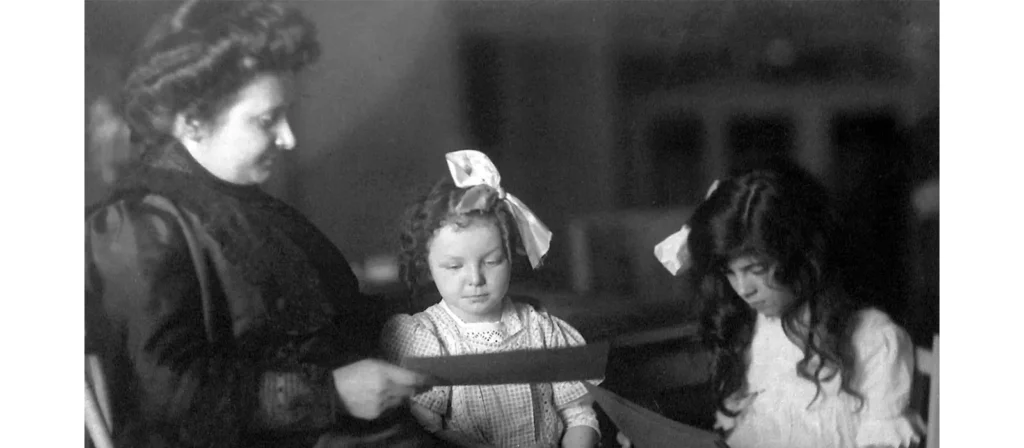
Pros y contras de Montessori
Ventajas de Montessori:
- Fomenta la independencia al permitir que los niños se apropien de su aprendizaje.
- Utiliza un entorno bien estructurado con materiales de aprendizaje especializados que fomentan actividades prácticas.
- Promueve la concentración, la autodisciplina y la automotivación.
- Es ampliamente reconocido con numerosas escuelas alrededor del mundo siguiendo el método Montessori.
Desventajas de Montessori:
- Puede que no sea tan interactivo socialmente como otros métodos, ya que los niños pasan más tiempo trabajando individualmente.
- Puede ser demasiado estructurado para algunos niños que prosperan en entornos menos controlados.
- A menudo requiere una inversión significativa en materiales Montessori especializados.
Antecedentes históricos: Reggio Emilia vs. Montessori
Comprender los antecedentes históricos de Emilia Reggio y Montessori ayuda a contextualizar sus enfoques educativos. Cada método surgió de un conjunto distinto de influencias culturales y filosóficas que moldearon su desarrollo.
Historia de la educación en Reggio Emilia
Reggio Emilia se originó en la pequeña ciudad italiana del mismo nombre después de la Segunda Guerra Mundial. El enfoque surgió del deseo de reconstruir la comunidad tras la devastación de la guerra. Loris Malaguzzi, docente y pensador pedagógico, desarrolló la idea de que los niños deben construir activamente su aprendizaje. El método Reggio Emilia se basa en la creencia de que el aprendizaje es un proceso dinámico dentro de un contexto social: los niños aprenden mediante la interacción con sus compañeros, maestros y el entorno.
Historia de la educación Montessori
Montessori fue fundado por la Dra. Maria Montessori, médica italiana que inicialmente trabajó con niños con discapacidad. Observó rápidamente que estos niños prosperaban cuando se les brindaban oportunidades de aprendizaje autónomo. Como resultado, Montessori desarrolló un marco educativo estructurado que enfatizaba la independencia y la responsabilidad personal. El método Montessori fue diseñado para apoyar el desarrollo natural del niño con materiales apropiados y un entorno adaptado para fomentar la exploración y el autodescubrimiento.


Filosofía de Reggio Emilia vs. Montessori
La filosofía central de Reggio Emilia vs. Montessori influye en la interacción de los docentes con los niños y en el diseño de las aulas. Analicemos las filosofías clave de Reggio Emilia vs. Montessori para comprender sus diferencias.
Filosofía del enfoque Reggio Emilia
La filosofía de Reggio Emilia se centra en la idea de que los niños participan activamente en su aprendizaje. Malaguzzi creía que la educación es una labor social, en la que los niños aprenden mediante la interacción con sus compañeros, maestros y el entorno. Es fundamental para Reggio Emilia la convicción de que los niños deben ser tratados como individuos competentes y creativos, capaces de construir su propia comprensión del mundo. Esta filosofía valora la colaboración, la expresión creativa y un profundo sentido de comunidad.
Filosofía de la educación Montessori
La filosofía Montessori se basa en el concepto de aprendizaje individualizado. La Dra. María Montessori creía que los niños son curiosos por naturaleza y capaces de dirigir su aprendizaje cuando se les proporciona el entorno adecuado. Educación Montessori Se enfatiza la autodisciplina, el respeto y el desarrollo de habilidades prácticas que ayudan a los niños a convertirse en personas independientes, responsables y reflexivas. El enfoque se centra en un aprendizaje estructurado que apoya el desarrollo natural del niño, priorizando la libertad dentro de ciertos límites.
El rol del docente: Reggio Emilia vs. Montessori
Tanto en Reggio Emilia como en Montessori, los profesores desempeñan un papel crucial a la hora de guiar el aprendizaje de los niños, pero sus enfoques difieren significativamente.
Enfoque Reggio Emilia: el papel del docente
En Reggio Emilia, los docentes son vistos como socios o co-aprendices, más que como instructores. Observan atentamente a los niños, escuchando sus ideas, preguntas e intereses, y luego crean experiencias de aprendizaje que amplían esas observaciones. Facilitan proyectos colaborativos y fomentan la exploración, a la vez que fomentan un ambiente de respeto y comunicación. La función del docente es guiar a los niños, brindándoles materiales y oportunidades para expresarse a través de diversos medios, como el arte, la música y la narración.
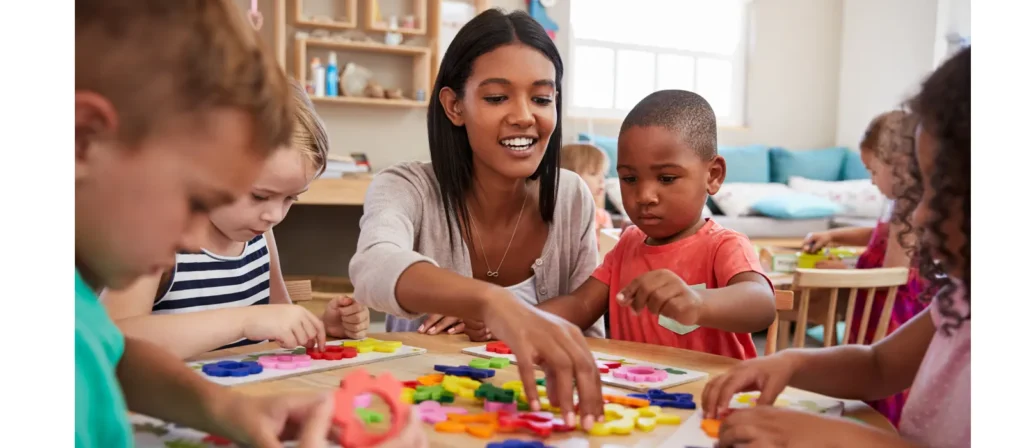
Enfoque Montessori: el rol del docente
En Montessori, los maestros sirven como guías o facilitadores del aprendizaje. Observan y comprenden las necesidades del niño y proporcionan los materiales o lecciones adecuados para ayudarle a progresar. Si bien los niños en las aulas Montessori pueden elegir sus actividades, los maestros introducen nuevos conceptos, demuestran actividades y corrigen errores cuando es necesario. Los maestros Montessori mantienen un entorno preparado donde los niños pueden explorar de forma independiente, tomar decisiones y desarrollar un sentido de responsabilidad.
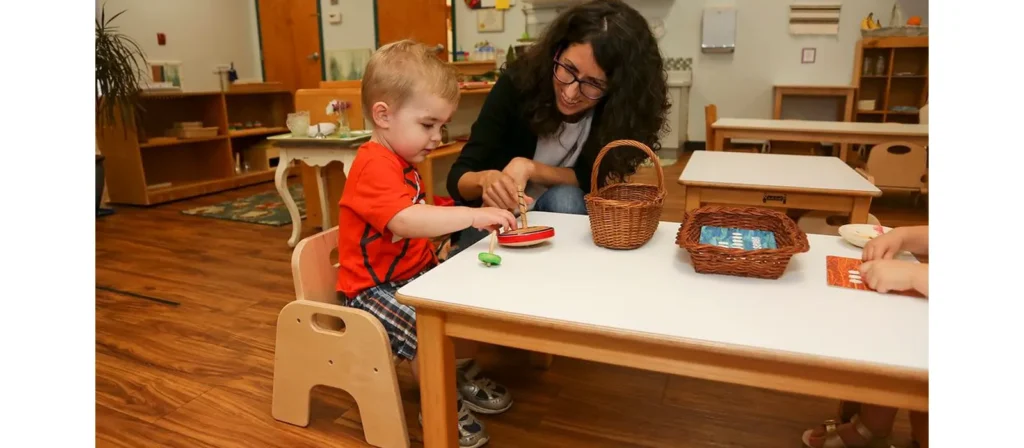
Diseño de aulas: Reggio Emilia vs. Montessori
El ambiente del aula desempeña un papel fundamental en la educación Reggio Emilia vs. Montessori, ya que ambos enfoques consideran que el ambiente es clave para fomentar el aprendizaje. Exploremos cómo Reggio Emilia vs. Montessori diseñan sus aulas.
Diseño de aulas en Reggio Emilia
1. El medio ambiente como el “tercer maestro”
- En Reggio Emilia, el entorno es fundamental para el aprendizaje del niño. Está diseñado para inspirar la curiosidad, la creatividad y la exploración.
- Las aulas suelen ser abiertas y flexibles, con espacios que se pueden reorganizar fácilmente. El mobiliario es ligero y móvil, lo que anima a los niños a adaptar el espacio a sus necesidades.
- Atractivo estético: La estética del espacio es importante. Las aulas están llenas de materiales naturales, colores suaves y abundante luz. La idea es crear un espacio acogedor y hermoso donde los niños se sientan respetados e inspirados.
- Exposición del Trabajo: El trabajo de los niños se exhibe en el aula para destacar su esfuerzo y progreso. Esta documentación fomenta un sentido de orgullo y responsabilidad por su aprendizaje.
- Materiales interactivos: Los materiales son de libre acceso y se pueden explorar de diversas maneras. Suelen exhibirse en estanterías a la altura de los niños, lo que invita a la interacción y al descubrimiento.
2. Énfasis en la colaboración
- Aulas de Reggio Emilia Fomentan la colaboración entre los niños, y el diseño lo refleja creando áreas donde pueden trabajar en grupos o parejas. A menudo se crean espacios acogedores y comunes para el aprendizaje cooperativo.
- Se hace especial hincapié en el trabajo en grupo, con mesas y asientos dispuestos para promover la discusión y la interacción social.
3. Conexión interior-exterior
- El aula a menudo difumina los límites entre el interior y el exterior. Grandes ventanales, acceso a jardines e incluso... aulas al aire libre Son comunes. El objetivo es conectar a los niños con la naturaleza y crear un entorno fluido donde puedan explorar el mundo que los rodea.
4. Documentación y reflexión
- Reggio Emilia enfatiza el papel de la documentación (fotografías, bocetos y notas) en el aprendizaje. El docente documenta las exploraciones de los niños y las exhibe para fomentar la reflexión y el debate. Esto se refleja a menudo en portafolios, diarios y exhibiciones de proyectos.
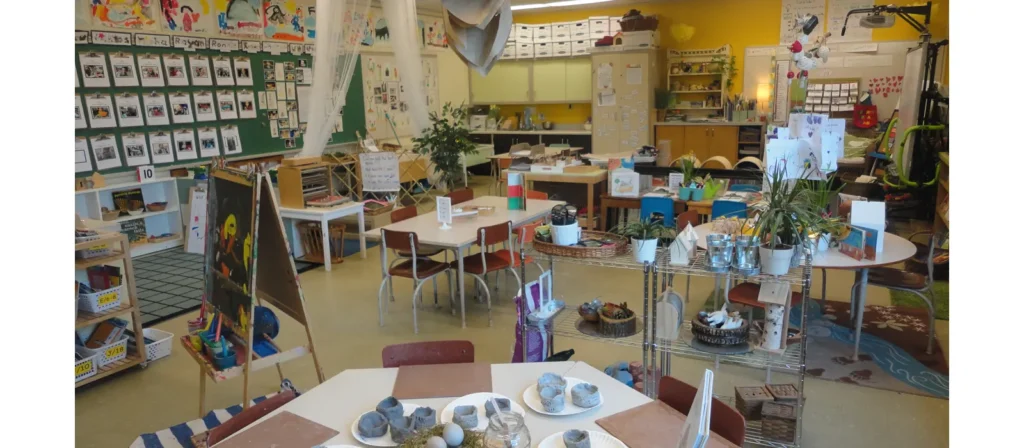
Diseño de aulas Montessori
1. Entorno preparado
- Las aulas Montessori están diseñadas para ser ordenadas y bien organizadas, con materiales seleccionados específicamente para fomentar la independencia y el dominio de la materia. El espacio está meticulosamente organizado para que los niños estén siempre a su alcance, con todo accesible.
- Áreas de vida práctica: una característica clave de Montessori diseño de aulas Es el área de la vida práctica, donde los niños pueden participar en actividades como verter, barrer, doblar y limpiar, lo que ayuda a desarrollar las habilidades motoras y la independencia.
- Materiales Montessori: El aula cuenta con materiales Montessori especializados, diseñados para autocorregirse y progresar de lo simple a lo complejo. Estos materiales suelen estar en estantes bajos, lo que permite a los niños elegirlos y devolverlos de forma independiente.
- Estaciones de trabajo: Los niños trabajan en estaciones de trabajo individuales o mesas pequeñas donde pueden concentrarse en sus tareas, en lugar de los típicos escritorios. Se anima a cada niño a trabajar de forma independiente, a su propio ritmo.
- Tranquilo y ordenado: El entorno Montessori está diseñado para ser tranquilo y ordenado, con mínimas distracciones. Esto fomenta la concentración y la autodisciplina.
2. Fomento de la independencia
- El diseño del aula Montessori enfatiza la libertad de movimiento del niño y la posibilidad de elegir actividades que le interesen. Se anima a los niños a seguir sus inclinaciones naturales, lo que significa que el aula está diseñada para ser muy accesible y fácil de usar.
- Estantes y materiales accesibles: Todo en el aula está al alcance del niño, lo que le permite elegir con independencia. Los estantes suelen ser bajos y están organizados por asignaturas, lo que garantiza que los niños puedan encontrar y usar los materiales fácilmente.
3. Áreas de trabajo y descanso
- Las aulas Montessori cuentan con áreas despejadas para el trabajo (actividades prácticas) y el descanso. A menudo, se integran en el diseño rincones tranquilos o zonas de lectura para que los niños encuentren momentos de paz y reflexión.
4. Estructura y rutina
- Si bien existe libertad de elección, las aulas Montessori mantienen un sentido de rutina y estructura, lo cual se evidencia en la organización y el uso de los materiales. Esto brinda a los niños una sensación de estabilidad y seguridad.
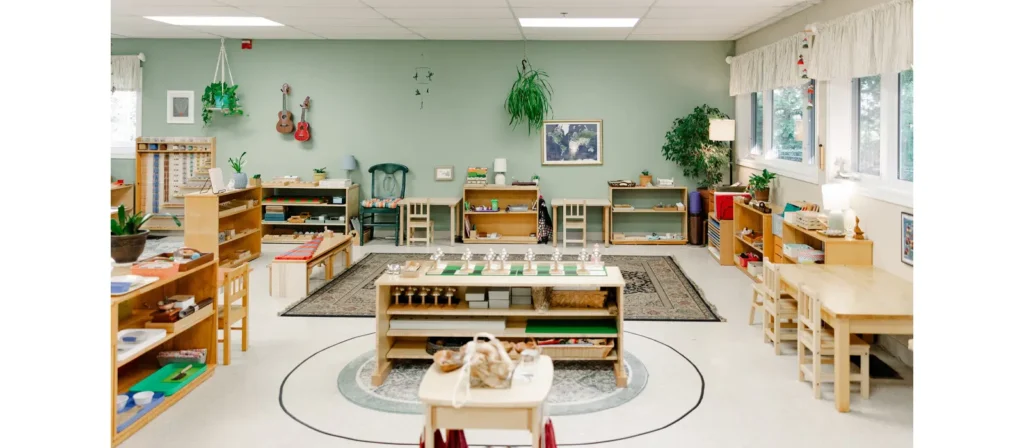
Diferencias clave entre el diseño de aulas Reggio Emilia y Montessori
1. Reggio Emilia frente a Montessori: El papel del medio ambiente
- Reggio EmiliaEl entorno se considera un "tercer maestro", rico en belleza, creatividad y oportunidades de descubrimiento. Es flexible, fomenta la colaboración e integra el aire libre.
- MontessoriEl entorno está meticulosamente preparado para promover la independencia, el orden y la concentración. Los materiales están diseñados para fomentar el aprendizaje práctico y la autocorrección.
2. Reggio Emilia frente a Montessori: Disposición del aula
- Reggio EmiliaLos espacios son abiertos y flexibles, priorizando la creación de espacios para el trabajo en grupo y la exploración. Los materiales se exhiben con frecuencia para fomentar el debate y la reflexión.
- MontessoriEl diseño está estructurado, con áreas claras para diferentes actividades (p. ej., vida práctica, sensorial, matemáticas). El entorno promueve el aprendizaje individual y la independencia.
3. Reggio Emilia frente a Montessori: Materiales y equipos
- Reggio EmiliaLos materiales son de libre elección, a menudo fabricados con materiales naturales y diseñados para ser explorados de diversas maneras. Los niños pueden acceder a diversos recursos creativos (p. ej., arcilla, tela, madera).
- Montessori:El aula está llena de materiales Montessori específicos y cuidadosamente diseñados que se centran en el desarrollo de habilidades o conceptos particulares, como la famosa Torre Rosa o las Letras de Papel de Lija.

4. Trabajo en grupo vs. Trabajo independiente
- Reggio EmiliaSe hace especial hincapié en la colaboración y el aprendizaje en grupo. Se anima a los niños a trabajar juntos y a participar en proyectos compartidos.
- MontessoriSi bien se fomenta la interacción social, el enfoque se centra más en el trabajo independiente. Los niños pueden elegir tareas y trabajar a su propio ritmo, a menudo solos.
Reggio Emilia Vs Montessori Furniture
En cuanto al diseño de mobiliario, ambas filosofías educativas valoran el mobiliario funcional y de tamaño infantil que favorezca el proceso de aprendizaje. Sin embargo, los estilos y la organización del mobiliario difieren.
Muebles Reggio Emilia
In Reggio Emilia, furniture is designed to be flexible and adaptable. Tables, chairs, and other elements are often movable to accommodate different types of group work or independent learning. The environment is open and collaborative, with materials encouraging creativity and exploration. Natural materials like wood are often used, as they are seen as tactile, inviting, and stimulating.
Muebles Montessori
Muebles Montessori Es altamente funcional y prioriza la accesibilidad y la simplicidad. Todos los muebles son de tamaño infantil para fomentar la independencia, con materiales organizados para que los niños puedan elegir libremente sus actividades. Los muebles suelen ser minimalistas, fabricados con materiales naturales como la madera, y dispuestos para fomentar el orden, la estructura y la concentración individual. Los muebles Montessori ayudan a crear un entorno que fomenta el aprendizaje autónomo y la independencia.


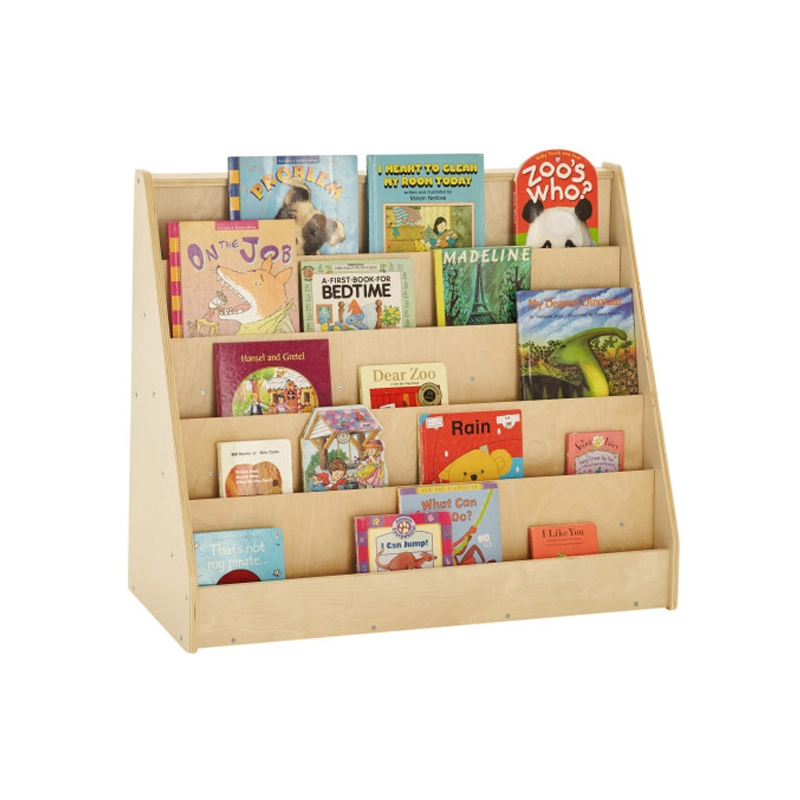
Herramientas de aprendizaje: Reggio Emilia vs. Montessori
Las herramientas de aprendizaje utilizadas en Reggio Emilia vs Montessori están diseñadas para respaldar las filosofías centrales de cada sistema.
Herramientas de aprendizaje de Reggio Emilia
Los materiales de Reggio Emilia son de libre elección y fomentan la creatividad. Se centran en materiales que permiten a los niños expresar sus ideas y explorar su entorno. Las herramientas comunes incluyen arcilla, pinturas, materiales de construcción y objetos naturales como rocas y hojas. El proceso de aprendizaje se considera un viaje de descubrimiento, y las herramientas lo facilitan.


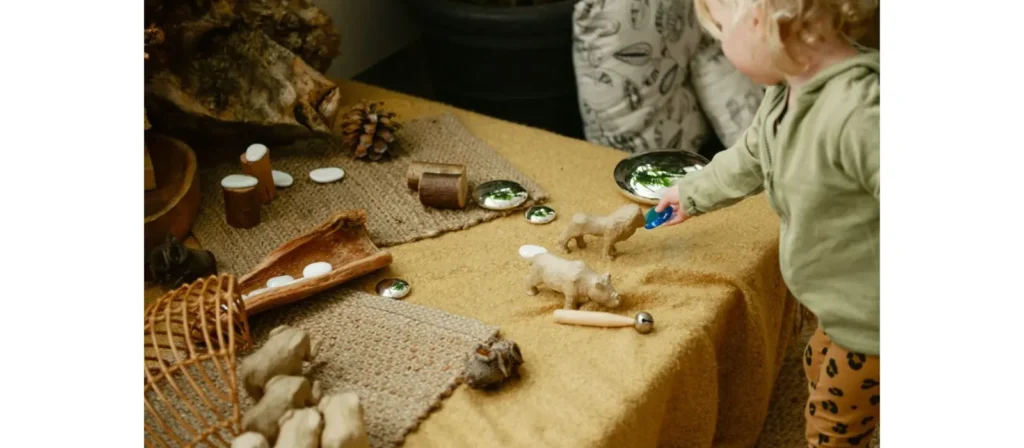
Material Montessori
Las herramientas de aprendizaje Montessori están estructuradas para enseñar conceptos y habilidades específicos. Cada material tiene un propósito y está diseñado para ayudar a los niños a dominar una tarea o habilidad específica. Por ejemplo, Materiales Montessori Podrían incluir varillas de colores para aprender matemáticas o cuentas para contar. Estos materiales están diseñados para autocorregirse, de modo que los niños puedan identificar y corregir errores de forma independiente.
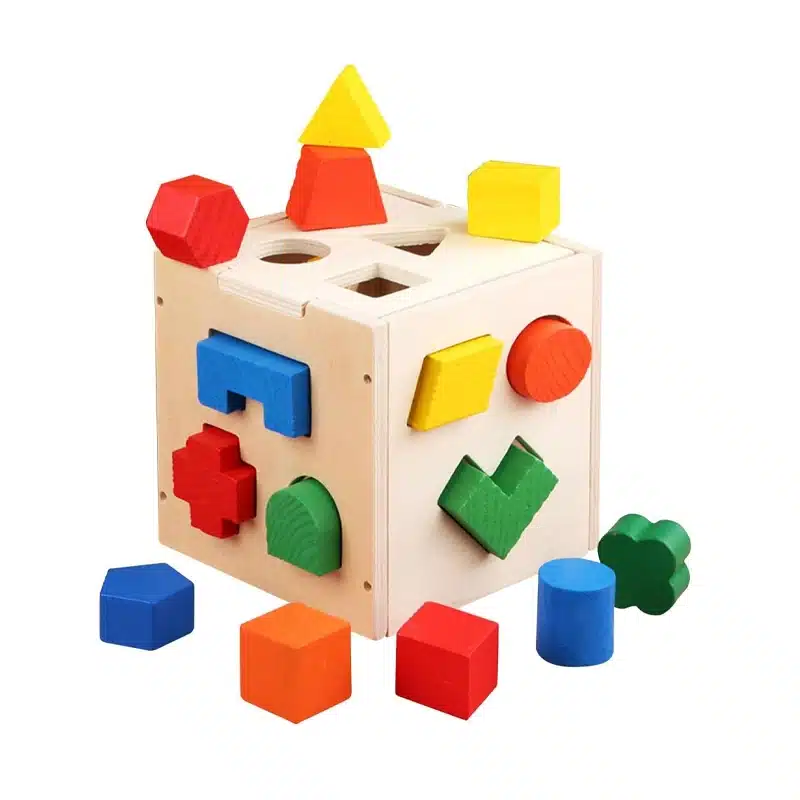
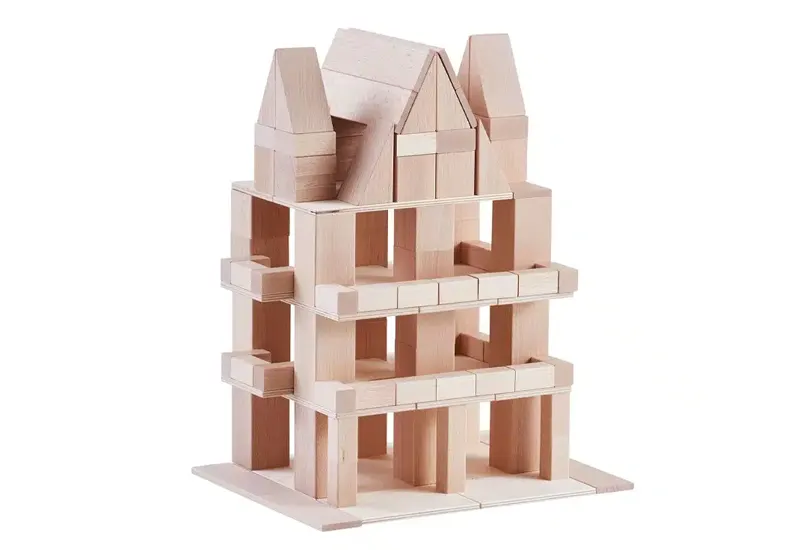
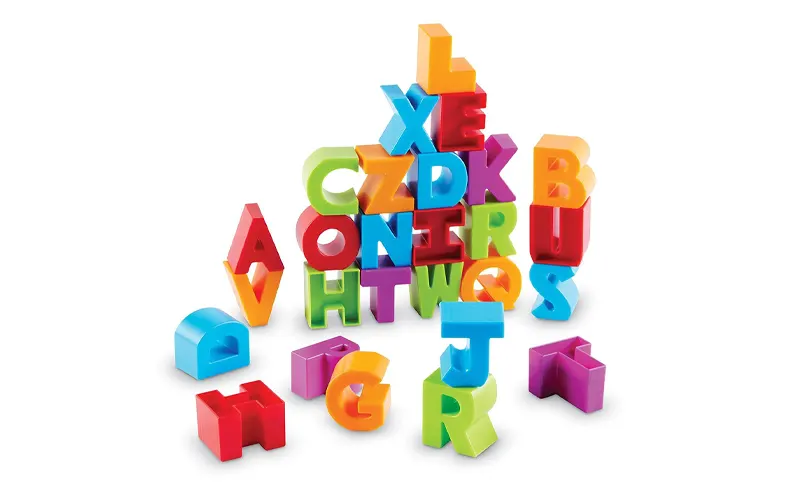
Similitudes clave entre Reggio Emilia y Montessori
Montessori vs. Reggio Emilia Se enfatiza la educación centrada en el niño, respetando su autonomía y su curiosidad natural por explorar. En estos enfoques, la función del docente no es instruir directamente, sino guiar y apoyar, ayudando a los niños a descubrir y resolver problemas a lo largo de su aprendizaje. Los niños son vistos como participantes activos en su aprendizaje, con diseños de aula y estilos de enseñanza que los animan a elegir actividades de forma independiente, explorar su entorno y colaborar con sus compañeros.
El entorno de aprendizaje desempeña un papel crucial en ambas filosofías. Se considera el "tercer maestro" en las aulas Montessori y Reggio Emilia. Estos entornos se centran en el niño y cuentan con materiales accesibles que estimulan la curiosidad y la creatividad. Las aulas Montessori suelen ser más estructuradas y ordenadas, con áreas claras designadas para tareas de aprendizaje específicas. Al mismo tiempo, los espacios Reggio Emilia son más abiertos y flexibles, lo que fomenta la exploración a través de la interacción con el entorno.
La interacción social y el desarrollo emocional también son fundamentales en ambos métodos. Se anima a los niños a colaborar con sus compañeros, compartir ideas y resolver conflictos, a la vez que desarrollan habilidades sociales e inteligencia emocional. El aprendizaje se considera más que simplemente adquirir conocimientos; también implica desarrollar habilidades personales y sociales, razón por la cual ambas filosofías enfatizan el crecimiento cognitivo, emocional, social y práctico.
Si bien Reggio Emilia y Montessori difieren en sus métodos de enseñanza y distribución de aulas, comparten principios comunes: fomentar la independencia, la exploración y el desarrollo holístico. Ambos buscan crear entornos que respeten el ritmo y los intereses del niño, fomentando el amor por el aprendizaje y el autodescubrimiento.
Elija la filosofía educativa adecuada para su hijo
Elegir la filosofía educativa adecuada para su hijo puede ser una decisión profundamente personal y depende en gran medida del temperamento de su hijo, su estilo de aprendizaje y los valores que usted tiene como padre. Reggio Emilia vs Montessori ofrece enfoques únicos para el aprendizaje, cada uno con Fortalezas y consideraciones. Comprender los principios clave de Reggio Emilia vs. Montessori puede ayudarle a tomar una decisión informada que se ajuste a las necesidades de su hijo y a sus objetivos educativos.
The Montessori method might be a great fit if your child thrives in an environment that promotes independence and self-direction. Montessori allows children to choose their activities, work at their own pace, and engage with materials that promote hands-on learning. This method is structured yet flexible, encouraging children to develop self-discipline, responsibility, and a sense of accomplishment. If your child enjoys working independently and has a strong curiosity, Montessori could provide the ideal space for them to explore and grow. It also emphasizes practical life skills, such as self-care and problem-solving, which can be beneficial in building confidence and life skills.
On the other hand, if your child is naturally social and expressive and enjoys learning through collaboration and creativity, the Reggio Emilia approach may be more suitable. Reggio Emilia enfatiza la importancia de las relaciones —con compañeros, profesores y el entorno— y considera el aula como un espacio donde los niños pueden explorar sus ideas e intereses mediante proyectos y actividades abiertas. El entorno se considera un "tercer maestro", que fomenta la creatividad y el trabajo en equipo. Si su hijo se desarrolla en un ambiente donde puede participar en proyectos grupales, explorar diferentes materiales y aprender mediante la indagación, Reggio Emilia ofrece un entorno que fomenta estas fortalezas.
Al tomar una decisión, considere lo siguiente:
- Estilo de aprendizaje¿Su hijo prefiere un entorno estructurado con materiales claros con los que interactuar, o prospera en un espacio más abierto y flexible donde puede trabajar en proyectos e interactuar con otros?
- Necesidades sociales¿A su hijo le gusta trabajar de forma independiente o prefiere actividades grupales y colaboración entre pares?
- Valores personales:Considere los valores educativos más esenciales: fomentar la independencia y la responsabilidad (Montessori) o fomentar la creatividad, la comunicación y la colaboración (Reggio Emilia).
- El temperamento del niñoConsidere si su hijo es más autónomo y se siente más cómodo con la independencia o si prospera en un entorno interactivo y basado en la comunidad.
En definitiva, Reggio Emilia y Montessori priorizan el desarrollo integral del niño, pero lo abordan de forma diferente. Su elección debe reflejar las tendencias y necesidades naturales de su hijo, así como su interacción con el mundo que lo rodea. Cualquiera de los dos enfoques puede brindar una experiencia educativa enriquecedora, atractiva y gratificante, pero la mejor opción depende del estilo de aprendizaje y el temperamento del niño.
Conclusión
En definitiva, Reggio Emilia vs. Montessori valora las capacidades innatas de los niños y busca fomentar el amor por el aprendizaje a lo largo de toda la vida. Al elegir la filosofía educativa adecuada, basada en la personalidad, los intereses y las necesidades de su hijo, puede ayudarlo a convertirse en personas seguras de sí mismas, capaces y compasivas. Independientemente del enfoque, el objetivo es crear un espacio enriquecedor donde los niños se sientan empoderados para explorar el mundo, establecer conexiones significativas y convertirse en aprendices reflexivos e independientes.

